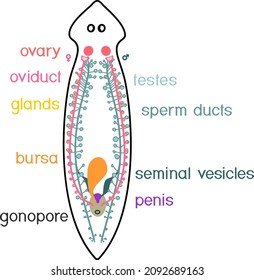
Imagine planaria as tiny underwater ninjas. They glide along surfaces, sometimes making you think they’re just parts of the scenery. To spot them in their natural habitat, you’ll need to know the tricks of the trade. In this guide, I’ll walk you through the process of identifying planaria, sharing tips on what to look for, where to find them, and why it’s important to recognize these unique creatures.
What is Planaria?
Let’s start with the basics. Planaria are a type of flatworm belonging to the class Turbellaria. They are often found in freshwater habitats like ponds, streams, and marshes. What makes these worms unique is their remarkable ability to regenerate. If they lose part of their body, they can grow it back! This resilience helps them thrive in various environmental conditions.
You might be wondering what they look like. Planaria come in various colors, usually shades of brown, black, or white. They are flat and elongated, resembling a small ribbon or a piece of spaghetti. Some can even be quite colorful, sporting vibrant patterns that can be intriguing to see in their natural habitat.
Where to Find Planaria
If you’re excited about spotting planaria, you’re in luck! They aren’t too picky about their environment. You can often find them in places like:
- Freshwater ponds
- Slow-moving streams
- Wetlands and marshes
- On aquatic plants or sediments
They prefer environments that are rich in organic material, like decaying leaves and algae. So, if you’re near a body of water that has a bit of plant life, keep your eyes peeled! The best time to look for them is during warm months when they are most active.
Physical Characteristics of Planaria
Identifying planaria comes down to knowing what traits to look for. Here’s a breakdown of their key physical features:
- Shape: Their body is flat and elongated—think of a ribbon or a leaf. Some species can even appear triangular at the front.
- Color: They can vary from brown or black to bright colors like yellow or green, depending on the species.
- Movement: Planaria glide through the water or across surfaces using cilia, which are tiny hair-like structures. Watching their movements can be quite mesmerizing.
- Eyespots: Don’t forget to look for their eyes! They have two distinct eyespots that can detect light and dark, giving them a unique appearance.
These features help differentiate them from other organisms. For instance, while some leeches might look somewhat similar, they tend to be more cylindrical and can be larger.
Behavioral Traits of Planaria
Observing planaria in action can be just as fascinating as their physical appearance. They are mostly nocturnal, which means they’re more active at night when they venture out to hunt for food. Planaria are carnivorous, preying on tiny organisms like protozoa, small crustaceans, and even other worms!
Here’s the thing: if you’ve got a freshwater aquarium, you might even see them come out more during feeding times when there’s movement in the water. Their hunting strategy is fascinating—they often use a sticky substance to capture their prey. So, if you see little glimmers or movements, there’s a good chance you’re watching a planaria in action!
Tools to Help Identify Planaria
While planaria are sometimes visible to the naked eye, other tools can enhance your spotting experience:
- Magnifying Glass: A simple magnifying glass can help you get a closer look at their intricate structures.
- Microscope: If you really want to dive deep, taking samples to examine under a microscope can reveal stunning details about their anatomy.
- Field Guides: Investing in a good field guide on freshwater organisms can be a great resource for identification.
Having these tools on hand can make your planaria-spotting adventures more enjoyable and informative. Plus, they’re fun to use if you’re out exploring with friends or family!
Why Identifying Planaria Matters
You might be curious about why it’s important to identify planaria. Understanding these creatures contributes to our knowledge of freshwater ecosystems. Planaria play a vital role in controlling population sizes of smaller organisms and help recycle nutrients in their environment.
By knowing how to identify them, you can engage in citizen science projects, contribute to biodiversity studies, or simply enjoy the beauty of your local waterways. And let’s face it—who wouldn’t feel a sense of pride sharing a fun fact about these fascinating creatures with their friends?
Identifying planaria in their natural habitat is a rewarding experience that connects you with the subtle beauty of freshwater ecosystems. Armed with the knowledge of their physical traits, behaviors, and the right tools, you’re now ready to embark on your own planaria discovery adventure.
So, next time you find yourself near a pond or stream, take a moment to observe the water. You might just spot a curious little planaria gliding through its world, reminding you of the incredible complexity of nature all around us. Happy spotting!
